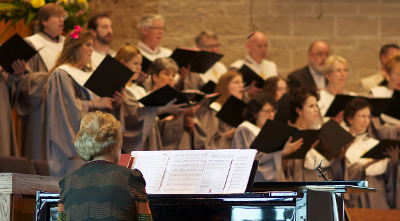Article Index

If you were attending a church worship service in 1955 and then returned to the same church in 1975, the changes would be noticeable but not dramatic. Churches were slow to change over that 20-year period.
If you, however, attended a church worship service in 2000 and then returned to that same church in 2010, there is a high likelihood you would see dramatic changes had taken place in only 10 years.
What, then, are some of the most significant changes? Please allow me to offer some trends from anecdotal information, church consultations and objective research.
As a caveat, some of the data-based research comes from an excellent study, "The National Congregations Study" by Duke University. This study, fortunately, is longitudinal, so it is able to look at changes over many years. But the study is also dated, with the latest data reported in 2007.
From these multiple sources, I have assembled nine changes that have come at a rapid pace in many churches. Please note my perspective. I am offering these from the perspective of a researcher; I am not making qualitative assessments. Also, with every trend there will be thousands of churches that are exceptions to the norm. But these are the changes in the majority of churches in North America:
1. Choirs are disappearing. From 1998 to 2007, the percentage of churches with choirs decreased from 54 percent to 44 percent. If that pace holds to this year, the percentage of churches with choirs is only 37 percent.
2. Dress is more casual. In many churches, a man wearing a tie in a worship service is now among the few rather than the majority. While the degree of casual dress is contextual, the trend is crossing all geographic and demographic lines.
3. Screens are pervasive. Some of you remember the days when putting a projection screen in a worship center was considered a sacrilege. Now most churches have screens. And if they have hymnals, the hymnals are largely ignored and the congregants follow along on the screens.
4. Preaching is longer. I will soon be in the process of gathering this data to make certain the objective research confirms the anecdotal information.
5. “Multi” is normative. Most congregants 20 years ago attended a Sunday morning worship service where no other Sunday morning alternatives were available. Today, most congregants attend a service that is part of numerous alternatives: multiservices, multicampuses, multisites and multivenues.
6. Attendees are more diverse. The Duke study noted the trend of the decrease in the number of all-white congregations.
7. Conflict is not increasing. In a recent post, I noted the decreasing frequency of worship wars. The Duke study noted that overall church conflict has not increased over a 20-year period.
8. More worship attendees are attending larger churches. Churches with an attendance of 400 and up now account for 90 percent of all worship attendees. Inversely, those churches with an attendance of under 400 only account for 10 percent of worship attendees.
9. Sunday evening services are disappearing. This issue has stirred quite a bit of discussion the past few years. I plan to expand upon it in one of my next posts on my blog. Stay tuned.
I have tried to present these changes from a research perspective instead of injecting my opinions or preferences. Obviously, I have my own, but I would rather hear from you.
Do you see these trends in your local congregation? What would you add?
Thom S. Rainer is the president and CEO of LifeWay Christian Resources. Previously, he served the Southern Baptist Theological Seminary for 12 years, where he was a founding dean of the Billy Graham School of Missions and Evangelism.
For the original article, visit thomrainer.com.
Get Spirit-filled content delivered right to your inbox! Click here to subscribe to our newsletter.
Dr. Mark Rutland's
National Institute of Christian Leadership (NICL)
The NICL is one of the top leadership training programs in the U.S. taught by Dr. Mark Rutland. If you're the type of leader that likes to have total control over every aspect of your ministry and your future success, the NICL is right for you!
FREE NICL MINI-COURSE - Enroll for 3-hours of training from Dr. Rutland's full leadership course. Experience the NICL and decide if this training is right for you and your team.
Do you feel stuck? Do you feel like you’re not growing? Do you need help from an expert in leadership? There is no other leadership training like the NICL. Gain the leadership skills and confidence you need to lead your church, business or ministry. Get ready to accomplish all of your God-given dreams. CLICK HERE for NICL training dates and details.The NICL Online is an option for any leader with time or schedule constraints. It's also for leaders who want to expedite their training to receive advanced standing for Master Level credit hours. Work through Dr. Rutland's full training from the comfort of your home or ministry at your pace. Learn more about NICL Online. Learn more about NICL Online.


